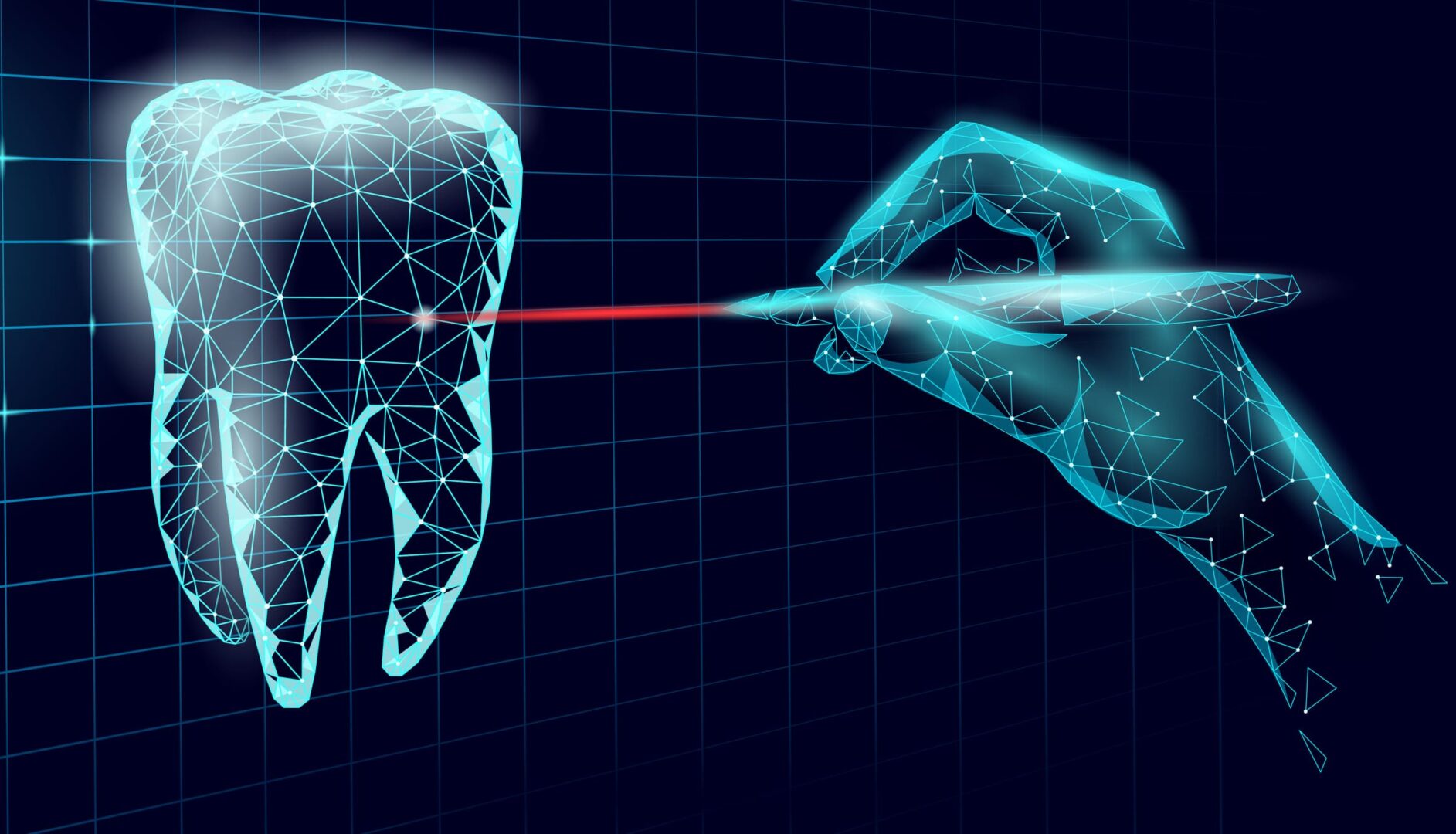There’s no doubt that dental veneers can be a game-changer when it comes to enhancing your smile. They offer a quick solution to a range of aesthetic issues like discolored, chipped, or misaligned teeth. However, not all veneers are created equal. We commonly see patients who have had their veneers completed elsewhere but may not meet a patient’s expectations or may contribute to oral health problems, necessitating their removal. For such situations, advancements in laser technology have made the removal process safer, less invasive, and more efficient.
Why Veneers Sometimes Need Removal
Contrary to popular belief, the need for veneer removal isn’t uncommon unless a great degree of care and expertise is put into creating them. Here are some of the primary reasons why patients seek to have their veneers removed:
Quality Issues with Fit
An improperly fitted veneer can create pockets where bacteria can collect, often leading to gum inflammation and bad breath. It’s a clear sign that the veneer needs either adjustment or complete removal.
Aesthetic Concerns
Patients may also be dissatisfied with the aesthetic outcome of their veneers. Whether it’s the shape, size, or color, an unmet expectation can be a compelling reason to reconsider the existing veneers.
When such issues arise, it’s crucial to correct them in a manner that minimizes additional damage to the underlying tooth structure. That’s where laser technology comes into play.
Advantages of Laser Technology in Veneer Removal
Minimally Invasive
Traditional methods of veneer removal often involve cutting off the veneer, a process that can risk damaging the underlying tooth. Laser technology, however, allows for a far less invasive approach. The laser can efficiently break the bonding agent that attaches the veneer to the tooth, often without having to cut off the veneer.
Reduced Risk of Damage
Even in cases where the veneer needs to be cut off, laser technology makes it easier to separate the veneer from the tooth, significantly reducing the risk of damage to the underlying tooth structure.
Comfort and Efficiency
The use of lasers often results in a more comfortable experience for the patient. The procedure is generally quicker, requires less anesthesia, and minimizes post-operative discomfort.
Step-by-Step Guide to Removing Veneers
When deciding to remove veneers, it’s essential to follow a systematic approach to ensure the process is as safe and effective as possible. Below is a simple guide on how to remove veneers:
1- Consultation and Assessment
The first step involves a consultation with a dental professional who will assess the current condition of your veneers and the health of your underlying teeth. They will discuss your reasons for wanting to remove veneers and review the potential benefits and risks.
2- Preparing the Tooth
The dentist will ensure the tooth is properly protected before any work begins. In some cases, a local anesthetic is applied to numb the area.
3- Laser or Traditional Removal
Depending on the technology used, the removal could be done using laser technology, which minimizes invasiveness, or traditional methods if necessary. The dentist will carefully separate the bonding agent that holds the veneer in place, avoiding damage to the natural tooth.
4- Post-Removal Care
After the veneer has been removed, your dentist will assess the tooth for any damage or decay. In some cases, you may need additional treatment, such as tooth whitening or reshaping.
Factors Influencing the Decision to Remove Veneers
There are several factors that can influence whether you should remove veneers:
- Aesthetic Issues: If the veneers don’t match the natural appearance of your teeth or the color fades, it may be time to take off veneers.
- Health Concerns: Veneers that are improperly fitted or that cause gum inflammation may need removal for health reasons.
- Veneer Durability: Over time, veneers may show signs of wear or damage, leading to the need for removal of veneers.
Risks and Considerations of Removing Veneers
While the process of removing veneers from teeth can be straightforward, there are some risks and considerations to keep in mind:
- Tooth Sensitivity: After veneers are removed, the underlying tooth may be sensitive to hot and cold temperatures.
- Potential Damage to Natural Tooth: If the veneer is not removed carefully, there’s a risk of damage to the tooth structure underneath, although laser technology significantly reduces this risk.
- Cost of Removal and Replacement: Removing veneers and replacing them with new ones can be costly, so it’s important to weigh the benefits against the financial commitment.
Restore Your Smile with Us!
If you’re considering veneer removal or need advice on how to properly care for your veneers, our expert team is here to help restore your smile. Whether you’re dealing with aesthetic concerns or health issues related to your veneers, we offer a range of solutions tailored to your needs. Schedule your veneers consultation today!
Maintaining Your Veneers
If you decide to keep your veneers, maintaining them properly can ensure they last longer. Here are a few tips for maintaining your veneers:
- Regular Cleaning: Brush and floss your teeth regularly to avoid plaque buildup around the veneers.
- Avoid Hard Foods: Be cautious when eating hard foods, as they can crack or chip the veneers.
- Routine Check-ups: Regular visits to your dentist will ensure the veneers remain in good condition and help catch any issues early.
FAQ about Removing Veneers Using Laser Technology
What is the best way to remove veneers?
The best way to remove veneers depends on the type of veneers you have and the condition of your teeth. In many cases, laser veneer removal is considered the most effective and least invasive method.
What is the latest veneer technology?
The latest veneer technology includes the use of laser systems that minimize the need for cutting and reduce recovery time. Laser technology also makes the process more comfortable and safer for the patient.
What do teeth look like after veneers are removed?
Once removing veneers, your natural teeth may appear duller or more uneven. However, the underlying tooth structure remains intact, and with proper care, your dentist can restore the tooth to a healthy condition.
Can veneers be removed without damage?
Yes, removing veneers can be done without damage if done properly, especially using laser technology. This method allows for minimal disruption to the underlying tooth structure, preserving its integrity.
What is the new trend in veneers?
The new trend in veneers involves advancements in laser technology, which allows for more efficient and less invasive removing veneers. Additionally, there’s a growing trend towards minimal-prep veneers, which require less alteration of the natural tooth.
What Patients Should Know
If you’re considering having your veneers removed due to dissatisfaction or oral health concerns, it’s helpful to consult with a dental professional experienced in advanced dental technologies like lasers. The focus should be on preserving as much of your natural tooth structure as possible, and using laser technology can play a pivotal role in achieving that aim.
In summary, the advent of laser technology in dental procedures is not just about innovation; it’s about offering practical, patient-focused solutions. When it comes to veneer removal, lasers provide a gentle, efficient, and minimally invasive alternative to traditional methods, better preserving the integrity of your natural teeth. It’s a technological advance that aligns with the ultimate goal of any dental procedure: to achieve the best possible outcome while prioritizing the patient’s overall well-being.



